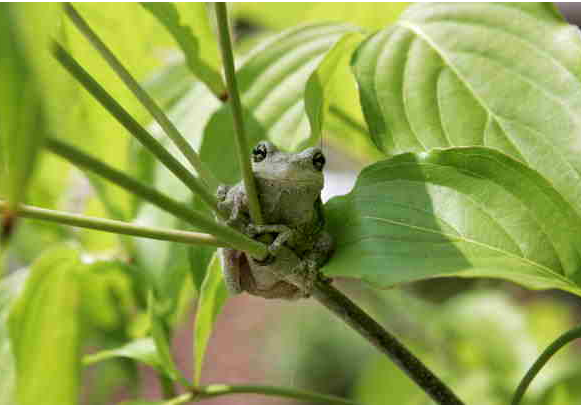By Angel Soleil, | September 12, 2016

A Tree Frog Looks Content Sitting On A Tree Branch
The world's frog population continues to fight against the havoc wreaked by the chytrid fungus. The disease has already contributed to the extinction of more than 200 species so far.
The Batrachochytrium dendrobatidis is to blame for the amphibian skin fungus called chytridiomycosis. According to studies, the disease causes the skin of an infected frog to cease its proper function. Since frogs breathe underwater and need their skin to absorb key nutrients, having chytridiomysis could lead to a loss of electrolytes and cardiac arrest - meaning death.
Like Us on Facebook
It is quite alarming that the killer fungus has already caused the extinction of six Australian frog species while leaving several others critically endangered.
Now scientists are doubling up their efforts to find a way to combat the killer fungus and save the world's frog population. A team of researchers from James Cook University (JCU) in Townsville is working on an experimental treatment that could help boost the immunity of frogs against the fungus.
Dr. Lee Berger said that the fungus could have been introduced from Asia or Africa during the late 1970s. She noted that frog species from these countries were more resistant to the fungus as compared to the Australian species. She believes that if researchers can figure out what makes a frog immune to the fungus, they would be able to evolve that immunity to give frogs the ability to fight back.
Berger stated that "there are now four species that have survived with the fungus for up to 20 years but they are at the point where they will be extinct quite soon without intervention."
Fighting Fungus with Fungus
The population of the mountain yellow-legged frog found in California's Alpine lake has been declining due to the killer fungus. According to a recent study, more than 90 percent of the population of the frog has disappeared.
Jessie Bushell, the director of conservation at the San Francisco Zoo, is part of a team that is focusing on saving the endangered frog species by immunizing it against the chytrid fungus.
Bushell and her team are given tadpoles of the mountain yellow-legged frog. Using a treatment method that originated from UC Santa Barbara, they began immunizing the tadpoles by injecting them with small amounts of the chytrid fungus.
"Their bodies identify it and can already be primed to fight off that infection, at least to keep it under control because they've seen it before," Bushell said.
Once the test subjects are healthy, the frogs are released back into the wild. It has been three years since Bushell's experimental treatment begun, and the frogs are reported to be surviving well.
-
Use of Coronavirus Pandemic Drones Raises Privacy Concerns: Drones Spread Fear, Local Officials Say

-
Coronavirus Hampers The Delivery Of Lockheed Martin F-35 Stealth Fighters For 2020

-
Instagram Speeds Up Plans to Add Account Memorialization Feature Due to COVID-19 Deaths

-
NASA: Perseverance Plans to Bring 'Mars Rock' to Earth in 2031

-
600 Dead And 3,000 In The Hospital as Iranians Believed Drinking High-Concentrations of Alcohol Can Cure The Coronavirus

-
600 Dead And 3,000 In The Hospital as Iranians Believed Drinking High-Concentrations of Alcohol Can Cure The Coronavirus

-
COVID-19: Doctors, Nurses Use Virtual Reality to Learn New Skills in Treating Coronavirus Patients







